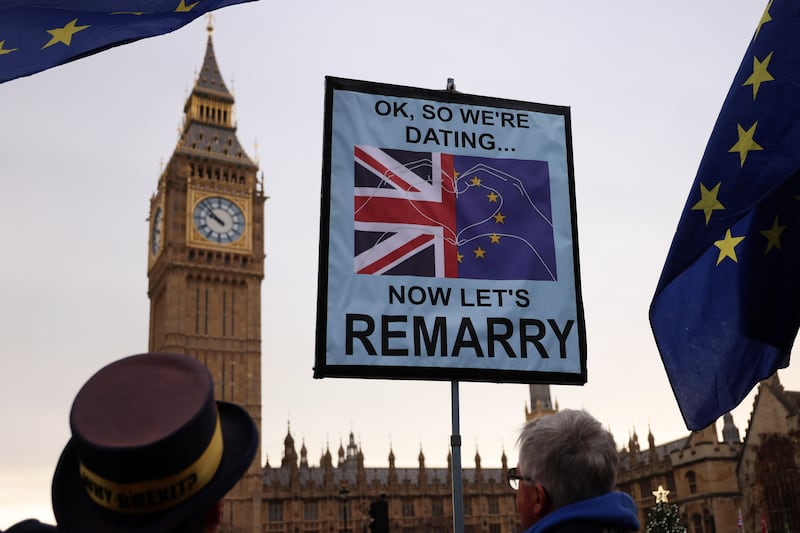Sometimes, observes Michael Horstmann, you dream when you are running. So for him city running tours, like the ones he organises in Berlin, are like dreams come true.
Horstmann was working full-time as an IT consultant a few years back, travelling the world, trying to stay fit and hoping to learn a little about the places he was visiting in the very short time available to him.
Getting people to guide him while they ran together seemed the perfect solution and eventually he thought of doing it back at home as a business.
The stories told by Hope Sloly of City Jogging Tours in London or Paul Bierman at Tourist Run Amsterdam bear striking similarities. Their continuing enthusiasm for the concept of "sightjogging" as it is often known, is another thing they have in common.
“With running you can get really close,” says Bierman, who set up his company with a friend a little over three years ago.
“On a bike you can come pretty close to the same experience but you have a lot of stress because of the traffic but even then running is better plus, if you do the tour at the start of your holiday, it’s a great way of getting orientated to the city. You can make a plan afterwards of what you want to go back to and you have a basic idea of where things are and how to get there.”
The fact that you are running means that you get to see more in a typical tour than those who might take a walking tour. There are other benefits too. “If you’re a serious runner then you get your run in for the day,” he says cheerfully. “While if you’re a regular tourist, then you can eat your slice of apple pie later in the day with less guilt because you’ve already done your work-out.”
Amsterdam is just one of many cities, including Dublin, in more than 30 countries that have running tours. The original idea has been credited to Cheryl Anker whose Off 'N Running company started taking people around Beverly Hills on foot back in 1994 to see the homes of celebrities. Gradually, the concept spread to many other US cities before catching on abroad, most notably Germany where Horstmann oversees a network of guiding companies.
Some of those involved also run other types of tours but running tours present particular challenges. “We tend to work with small numbers,” he says. “Up to three is usual because you need to be sure that everybody can hear and also that they understand what is being said.
“Also, the number of tours is sometimes limited. The reason is simple; you are physically limited . . . you can’t run eight hours a day, so you need to have different guides all of whom have to know the routes, be qualified, be safe and fit enough to do the running.
“A lot depends on the weather too,” he says. “People taking running tours tend to book very late because they are always waiting to see what the weather will be like. It makes things a little difficult to predict. It’s understandable, people still get the information and the anecdotes but the backdrop doesn’t look so good; they want the blue skies to make the pictures of their tour more special.
“But the result is that sometimes we are so busy that we are overrun, other times we can go for two or three days with no customers.”
Those who come clearly enjoy the experience. The tours are almost without exception rated as five-star experiences by those who review them on travel recommendation sites and rank very high in recommendations for activities in many cities.
Still, they wouldn’t be for everyone. Pace is dictated by the ability of the participants and judging it seems to be one of the key skills of the guide.
On scheduled tours there are usually plenty of stops both for water and pictures (private tours, which make up an unusually large proportion of the business, might be more demanding if the customer wants it that way). Many take place either early in the morning or late in the evening, when streets are less packed and getting around is easier. These are times when most tourists are either sleeping or eating.
Sloly, whose company’s tours of London’s Royal parks, standard attractions or less well known sights start at €30, says, “We get quite a lot of repeat business from people who have been in London for work, do a tour and enjoy it, then come back for another when they return.”
A fair bit of business comes from residents in the city who like to run and want to learn a little more about where they live while tourists are also a very significant proportion.
“But we get many people,” she says, “including couples where one runs and the other doesn’t but the woman, say, wants to show her boyfriend that she can take an interest in his hobbies.”
And you know what they say, the couple who gets up at dawn to run together while on a city break, stays together – or at least dreams together.
City Jogging Tours
Tourist Run Amsterdam
Mikes Sightrunning
Sight Jogging Dublin
Global Running Tours




















